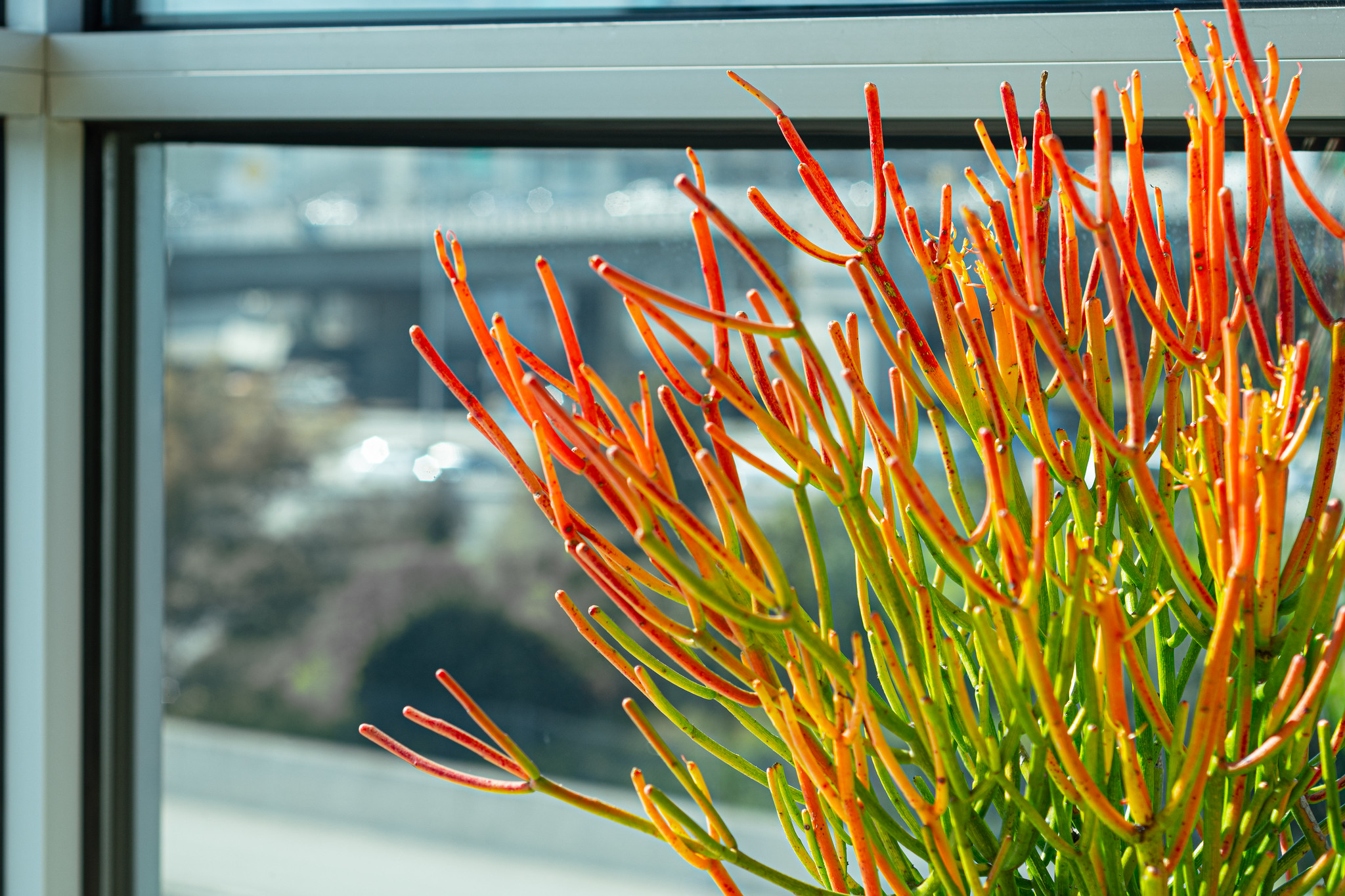About 10 years ago, succulents began an extraordinary rise in popularity. They turned up everywhere – on windowsills, in wreaths and centerpieces, arranged in frames, even dyed.
Nowadays, succulents are hipper than ever. Everyone seems to have at least one. Marcia Sherry, an Oregon State University Extension Service Master Gardener since 1999, has many more than that – around 50 different varieties at last count.
When she was in college, Sherry came face to face with a donkey tail succulent (Sedum morganianum), which is still one of her favorites.
“The donkey tail was my first houseplant back in college in the ‘70s,” said Sherry, a retired architect. “Ever since then I’ve had succulents. I like them. Succulents are forgiving. If you forget to water them, they don’t die like other plants would.”
Succulents – defined by the water stored in their leaves – are an incredibly diverse group of plants with many different forms, textures and colors. They come from many parts of the world, typically from Africa, Mexico, Central and South America. Some thrive outside in temperatures down to -20 degrees F. Others want to cuddle up near a bright window inside. Almost all of them take very little care.
“They’re pretty perfect,” Sherry said. “Everybody seems to like them. They’re fun plants.”
Sherry said she doesn’t play favorites, but she mentioned in particular her pregnant onion plant (Albuca bracteate) and firesticks plant (Euphorbia tirucalla ‘Sticks on Fire’). Firesticks lives up to its name with pencil-shaped, leafless stems in green, yellow and red. Pregnant onion plants are also aptly named with long, skinny, arching leaves that emerge from a softball-sized bulb growing above the soil. Both are houseplants as are two other keepers, the familiar jade plant and aloe.
For her indoor succulents, Sherry uses the north or east windows where the plants get bright but not direct sun. She waters them about once a month, sometimes even less. She’ll stick her finger down an inch or so into the pot. If it’s moist, she leaves it. Too much water will cause the roots to rot. She doesn’t fertilize her succulents and they aren’t bothered by pests.
Outdoors, the job of looking after hardy succulents is just as carefree. With new plants, she puts them in the shade for a day or two to let them scar over before planting. Then she pulls off the dead, outside leaves, uses a pencil to make a hole and sticks the plant in the ground in a spot that gets full sun.
“Then water it and leave,” she said. “The outdoor plants take care of themselves once they’re established.”
The routine indoors is just as easy. Sherry uses cactus mix in pots with drainage holes. Or she’ll make her own mix using regular potting soil and perlite or peat moss to lighten it up.
A few months ago, her cat knocked over a donkey tail plant. Sherry saw all the pieces and decided to see how easy they’d be to propagate. Using her potting mixture, she filled a seed tray, making sure it had drainage holes. She stuck in some of the broken leaves, watered lightly and walked away. Within a few weeks, leaves appeared. After a few months, it was time to transplant the babies into pots.
“That’s all you have to do,” Sherry said. “They really are the easiest plants you can grow. I’ve known that for a long time.”

